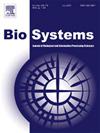动物生产能量和效率的整体系统分析
IF 1.9
4区 生物学
Q2 BIOLOGY
引用次数: 0
摘要
生命系统的主要特征是其能量摄取和利用的速率(功率)和比率(效率),它们之间的关系不能完全从非生命物理系统中看到的那样预测出来。虽然已知生产(生长和繁殖)的能量和效率会对日粮水平、饮食和其他内在和外在因素的差异作出反应,但为什么这些反应在动物之间差异很大却很少被理解,并且在理论模型中经常被忽略。在这项探索性研究中,我展示了对资源摄取和利用系统的效率对食物水平变化和相关能量流动(功率)率的不同反应的整体分析,有助于预测摄入的能量转化为生长和繁殖的依赖于比例的效率。当同化效率(资源供应)的相对影响占主导地位时(如许多食草动物),将摄入的能量转化为生产的效率往往随日粮水平和生产能力呈负变化,而当将吸收的能量转化为生物组织(资源利用)的效率的相对影响占主导地位时(如食肉动物),摄食生产效率随日粮水平和生产功率呈正相关。我还扩展了这一分析,展示了从细胞到生态系统的生物组织的多个层次的研究如何提高我们对生产效率与定量水平或整体能量流(功率)的协变的理解。提出了一种新的关于生命系统力量和效率的综合理论。本文章由计算机程序翻译,如有差异,请以英文原文为准。
Holistic system analysis of the energetic power and efficiency of animal production
Major features of living systems are the rates (power) and ratios (efficiency) of their energy uptake and use, whose relationships are not entirely predictable from those seen in nonliving physical systems. Although the energetic power and efficiency of production (growth and reproduction) are known to respond to differences in ration level, diet, and other intrinsic and extrinsic factors, why these responses vary considerably among animals is little understood and often ignored in theoretical models. In this exploratory study I show that a holistic analysis of how the different responses of the efficiencies of resource uptake and use systems to variation in food levels and associated rates of energy flow (power) helps one predict the ration-dependent efficiency of conversion of ingested energy into growth and reproduction. When the relative influence of the efficiency of assimilation (resource supply) predominates (as in many herbivores), the efficiency of converting ingested energy into production tends to vary negatively with ration level and production power, whereas when the relative influence of the efficiency of converting assimilated energy into biological tissues (resource use) predominates (as in carnivores), the ingestive production efficiency tends to vary positively with ration level and production power. I also extend this analysis by showing how studies at multiple hierarchical levels of biological organization, from cells to ecosystems, may improve our understanding of the covariation of production efficiency with ration level or overall rate of energy flow (power). A new comprehensive theory of the power and efficiency of living systems is advocated.
求助全文
通过发布文献求助,成功后即可免费获取论文全文。
去求助
来源期刊

Biosystems
生物-生物学
CiteScore
3.70
自引率
18.80%
发文量
129
审稿时长
34 days
期刊介绍:
BioSystems encourages experimental, computational, and theoretical articles that link biology, evolutionary thinking, and the information processing sciences. The link areas form a circle that encompasses the fundamental nature of biological information processing, computational modeling of complex biological systems, evolutionary models of computation, the application of biological principles to the design of novel computing systems, and the use of biomolecular materials to synthesize artificial systems that capture essential principles of natural biological information processing.
 求助内容:
求助内容: 应助结果提醒方式:
应助结果提醒方式:


